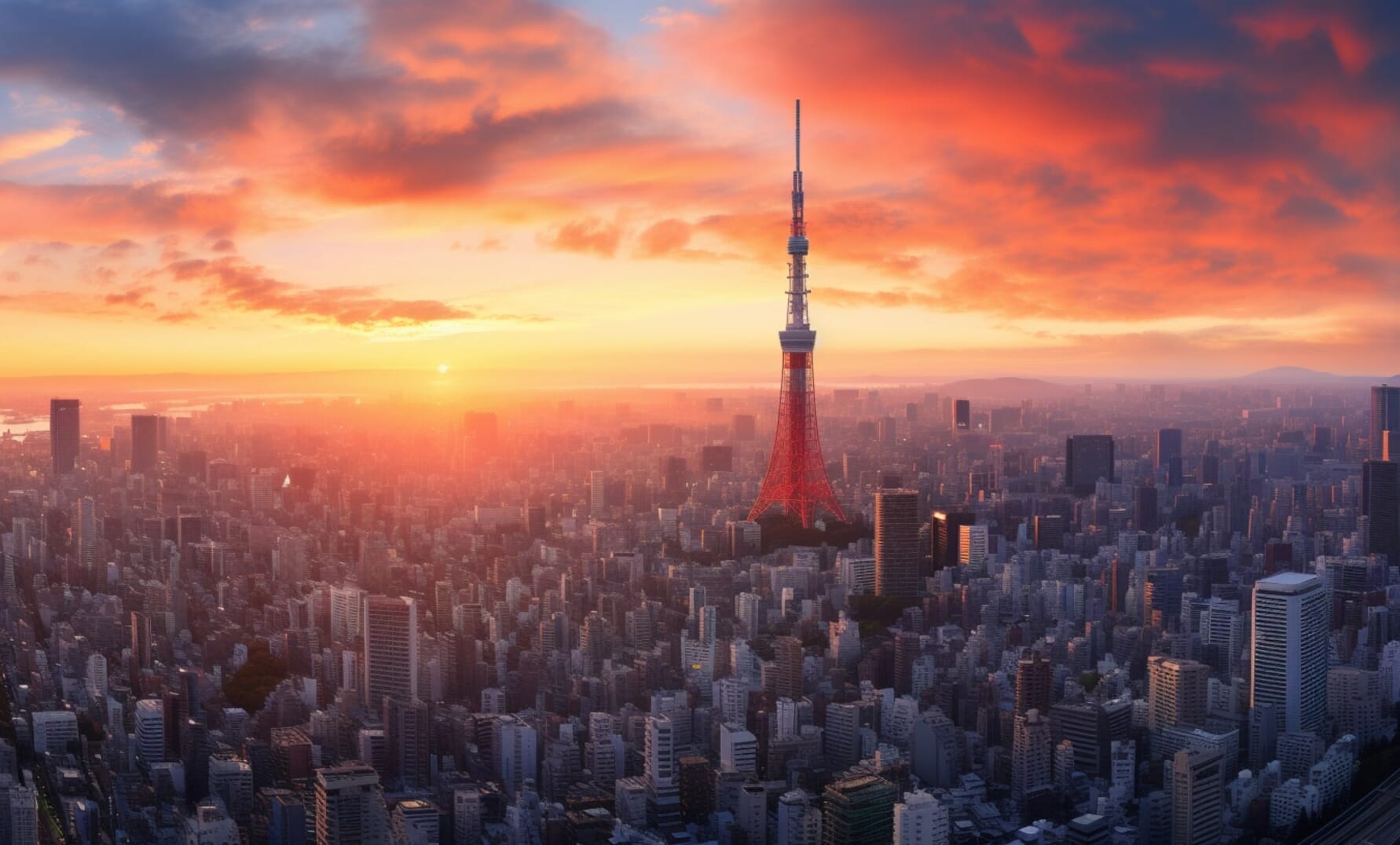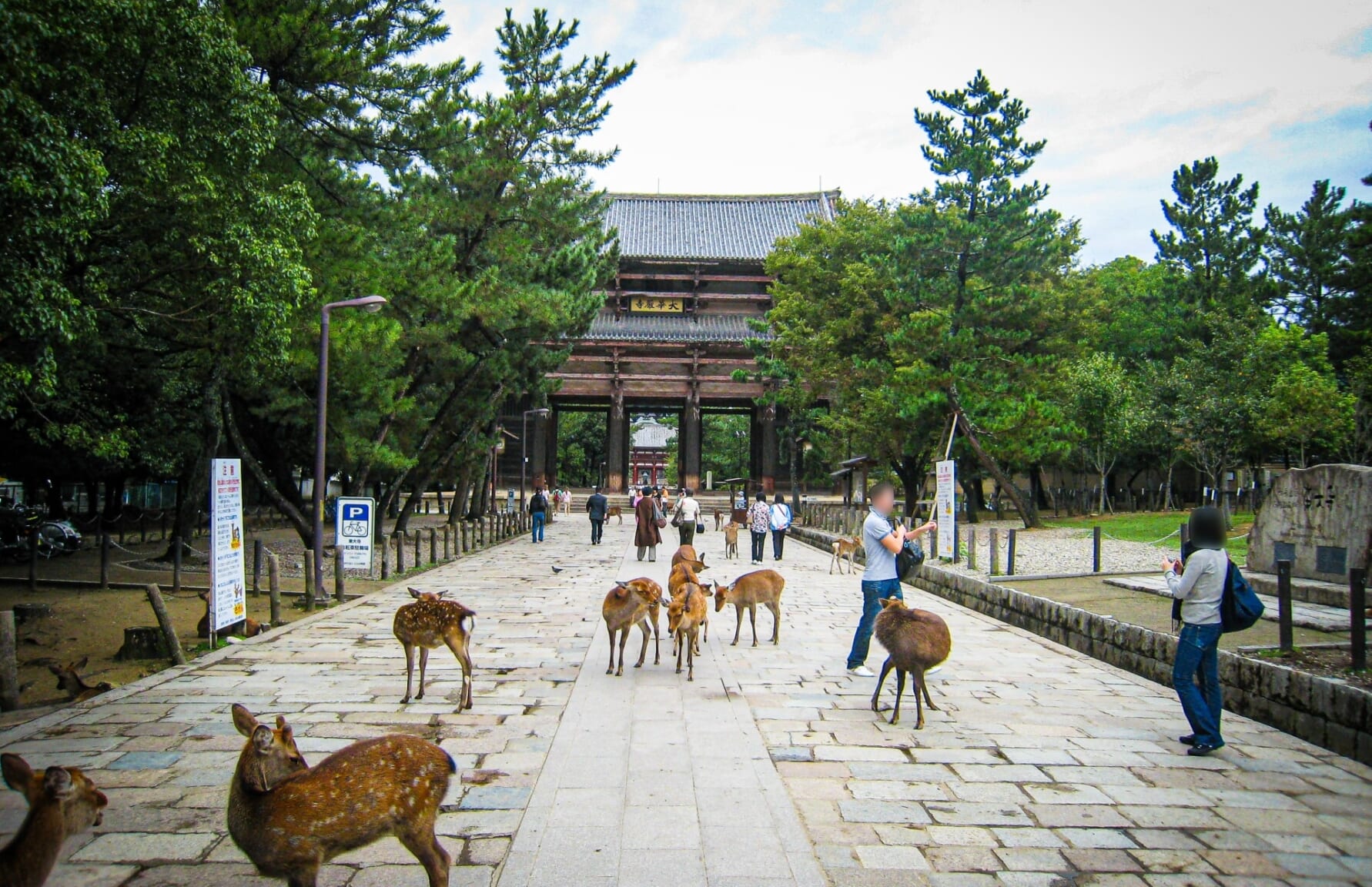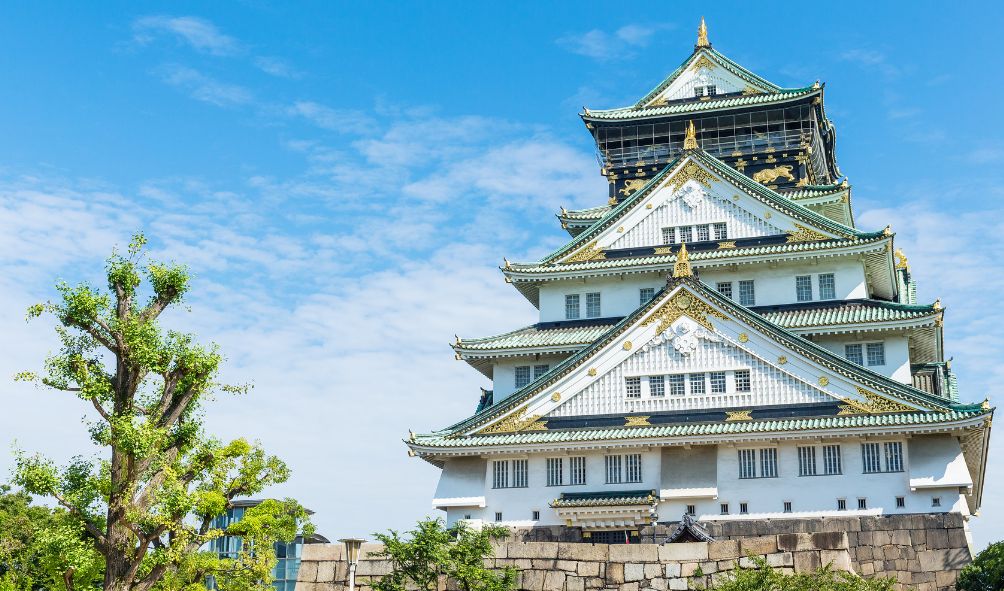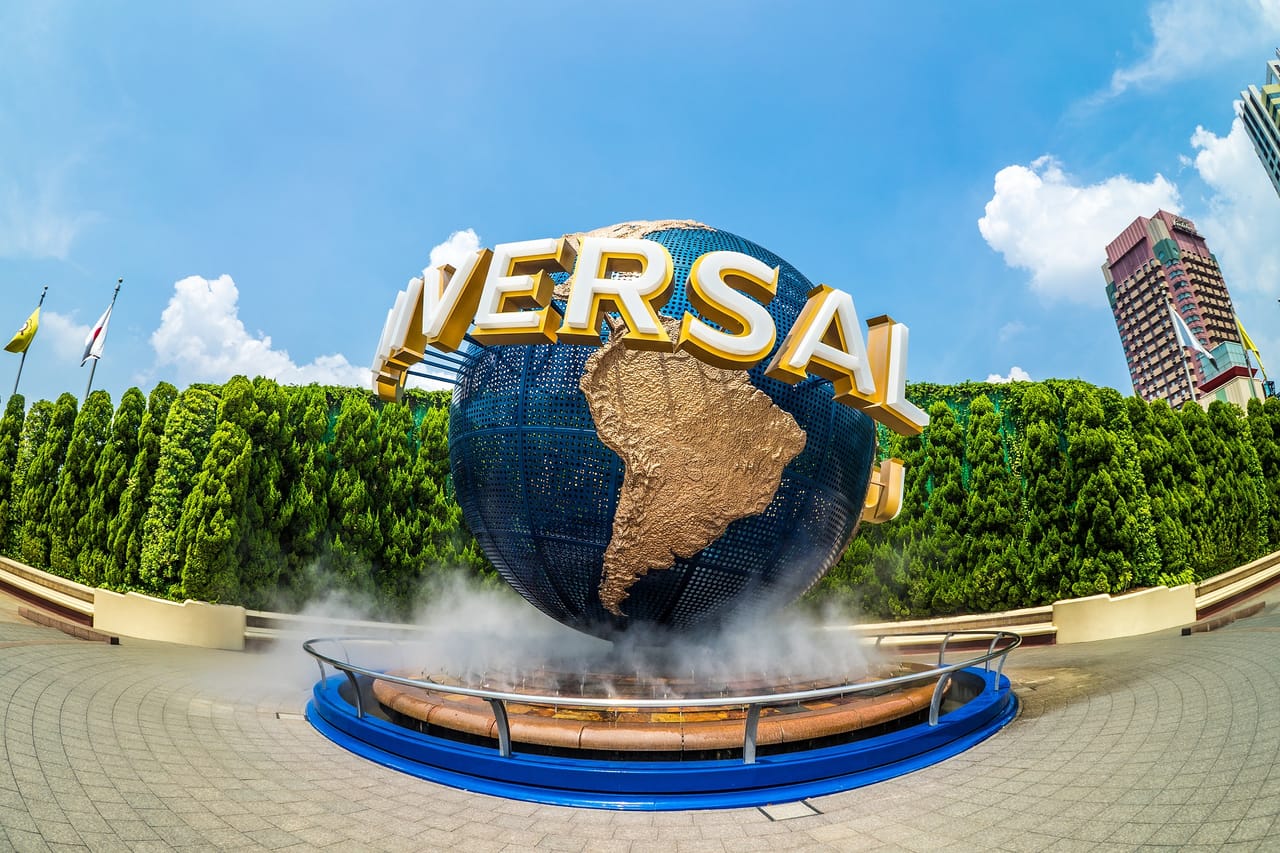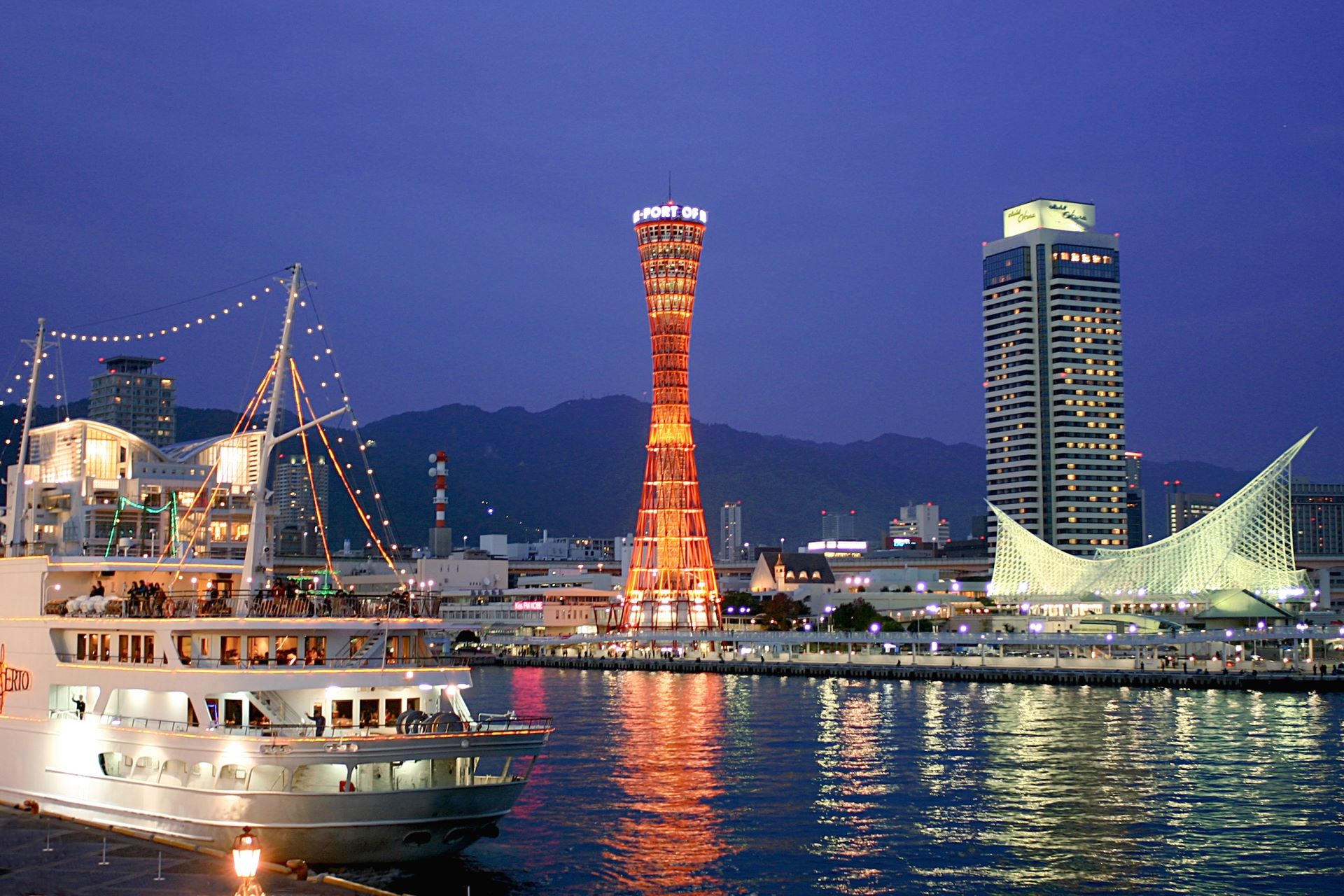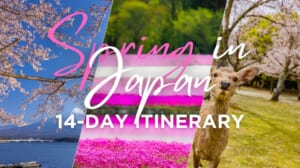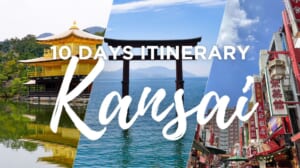3 Weeks Itinerary in Japan: The Ultimate Journey
Exploring the Best of Japan in Tokyo, Kyoto, Osaka, and Beyond

Japan is a country where ancient temples stand beside neon skyscrapers, where high-speed trains whisk you from samurai castles to steaming onsen baths, and where every meal feels like an art form. Planning a three-week trip here means balancing history, modern culture, breathtaking nature, and, of course, some of the best food on the planet.
This itinerary covers Tokyo’s electric energy, Kyoto’s timeless charm, Osaka’s unbeatable street food, and Hiroshima’s poignant history—plus scenic escapes to Nikko, Hakone, and Kanazawa. Whether it’s feeding deer in Nara, marveling at a floating torii gate in Miyajima, or getting lost in Kyoto’s geisha districts, every day offers something unforgettable.
With efficient bullet trains and a good mix of big cities, quiet towns, and cultural gems, this guide ensures you experience the very best of Japan—without feeling rushed. Grab your JR Pass and get ready for an adventure like no other.
*Please note that this article contains affiliate links.
See also: Shinkansen: A Complete Guide to the Japanese Bullet Train
<<Buy your Bullet Train tickets here!>>
Week 1: Tokyo & Surroundings
Days 1-4: Tokyo, The Ultimate City Experience
Tokyo is a city that never stops moving. Soak up the energy of Shibuya’s flashing billboards, Akihabara’s cutting-edge tech, and mix it up with charming gardens or the quiet shrines tucked between skyscrapers. You have four days to give you a good mix of history, culture, shopping, and food. If your flight has arrived soon enough on the first day, leave your stuff at the hotel or a station locker, and let’s get moving!
Check more itinerary ideas for Tokyo:
Tokyo 3 Days Itinerary for First Timer
3 Days Itinerary: Tokyo on a Budget
Day 1: Shibuya & Shinjuku – Neon Lights and Urban Energy

Experience Tokyo’s urban epicenter. Today, you’ll dive straight into the lively, neon-lit districts where you will take the pulse of the city! The day unfolds amid famous crossings, lively alleys, and spaces that capture Tokyo’s vibrant spirit.
- Shibuya Scramble Crossing – Start your trip at the world’s busiest pedestrian crossing. Watch from the Starbucks above or dive straight into the chaos.
- Hachiko Statue – Snap a photo with Tokyo’s most famous dog, a symbol of loyalty.
- Metropolitan Government Building – Don’t miss the opportunity to see Tokyo from this iconic building!
- Shinjuku Gyoen – A peaceful park perfect for a break from the crowds.
- Omoide Yokocho & Golden Gai – Tiny alleyways packed with yakitori stalls and hole-in-the-wall bars.
Day 2: Akihabara & Ueno – Tech, Anime, and Museums
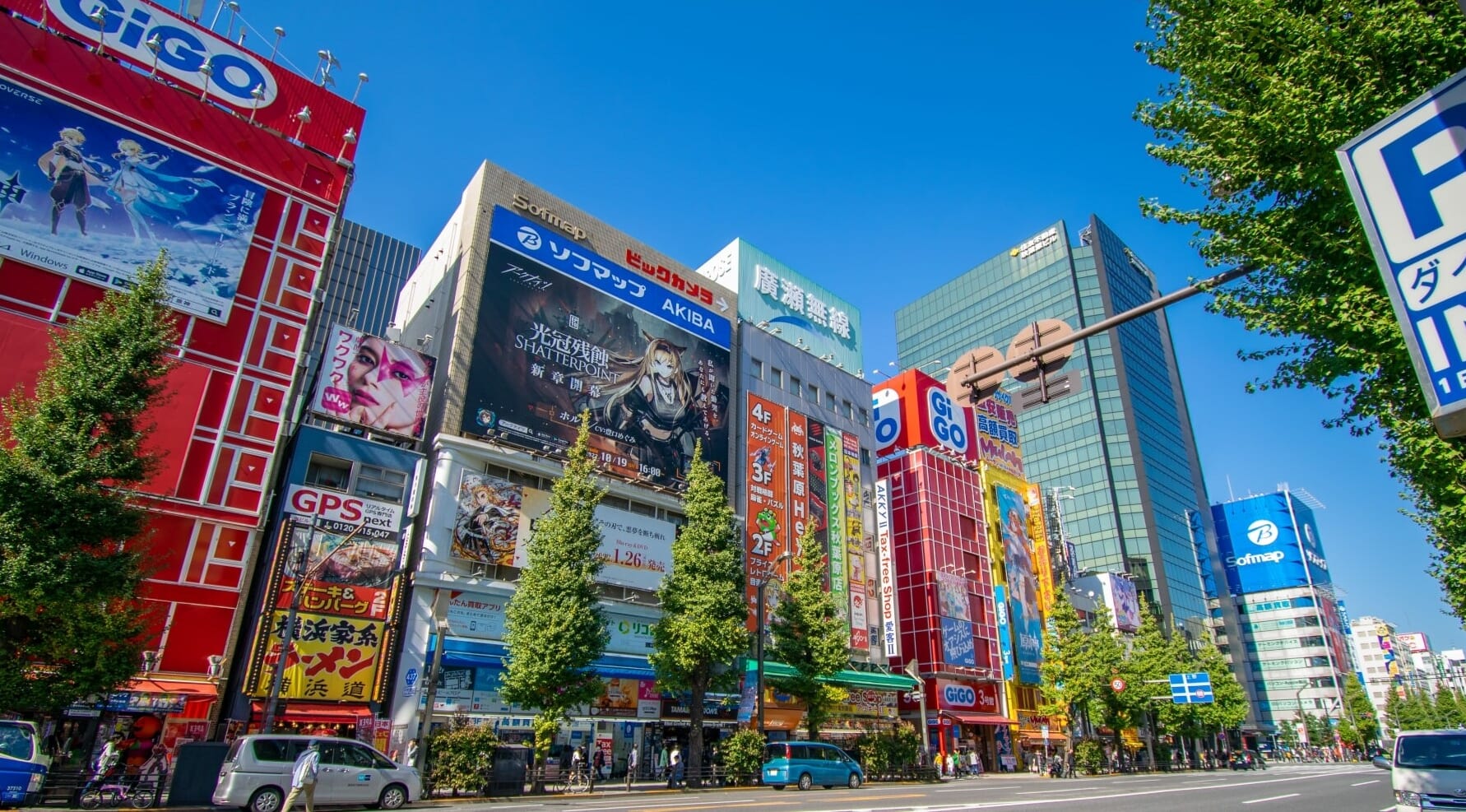
Step into the world of tech and tradition. In Akihabara, you’ll be immersed in gaming and anime culture, while Ueno offers a refreshing touch of art and nature. This day highlights the contrast between cutting-edge gadgets and historical treasures.
- Akihabara – The mecca of gaming, anime, and electronics. Stop by Super Potato for retro games or explore the multi-story arcades.
- Ueno Park – A green escape with museums, temples, and near interesting spots like Ameyoko.
- Tokyo National Museum – A deep dive into Japan’s samurai, Buddhist, and artistic history.
Day 3: Asakusa & Sumida – Tradition and Modernity
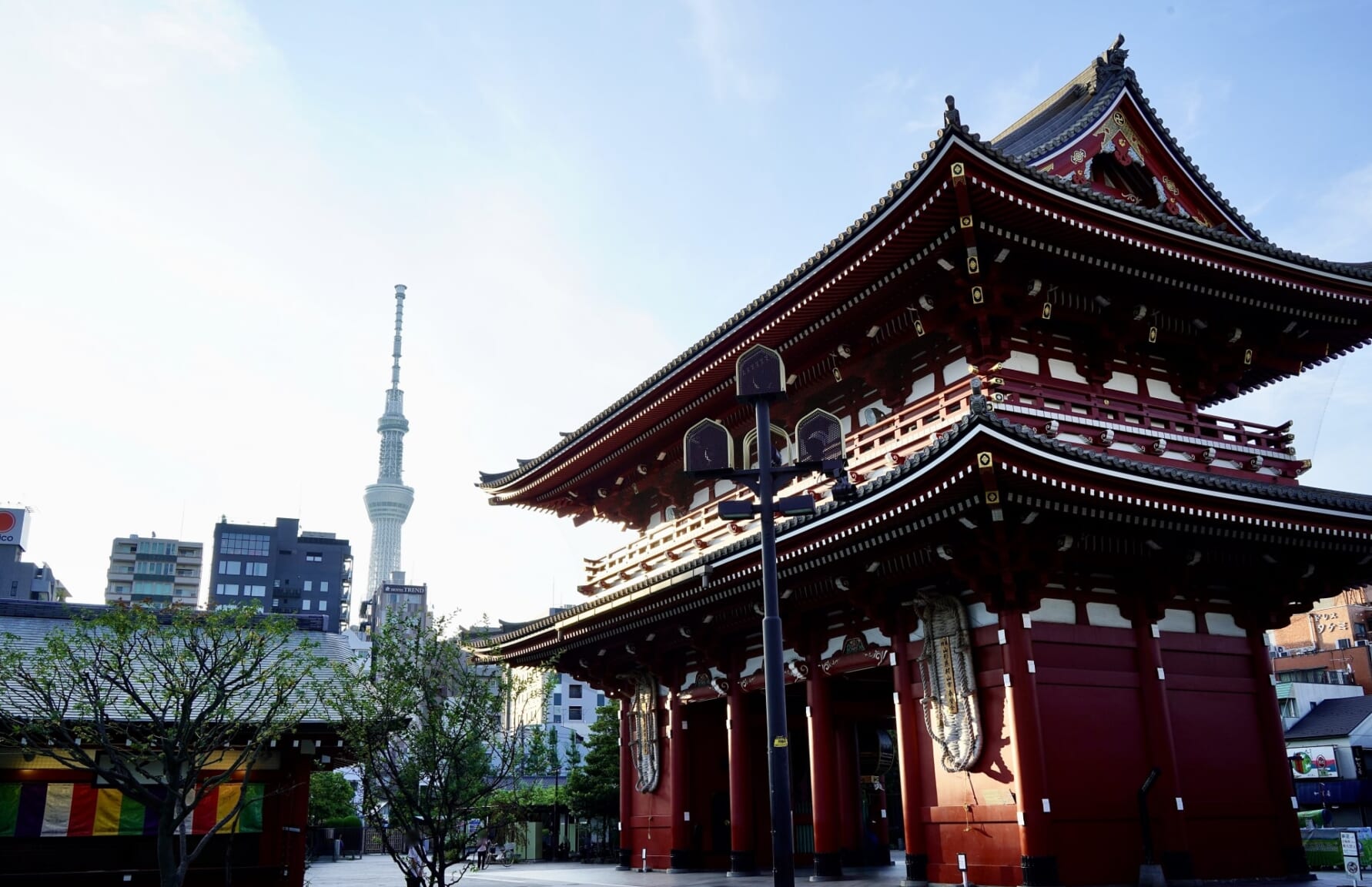
Discover Tokyo’s historical side alongside its modern skyline. Stroll past ancient temples and enjoy lively market streets in Asakusa, then marvel at panoramic city views from the towering Sumida landmark—a day where old meets new.
- Sensoji Temple – Tokyo’s oldest temple, famous for its massive red lantern and lively Nakamise shopping street.
- Tokyo Skytree – Soar above the city at Japan’s tallest structure. The view at sunset is unbeatable.
- Sumida River Cruise – A scenic way to travel toward the futuristic Odaiba district.
Day 4: Harajuku & Omotesando – Fashion, Quirks, and Culture
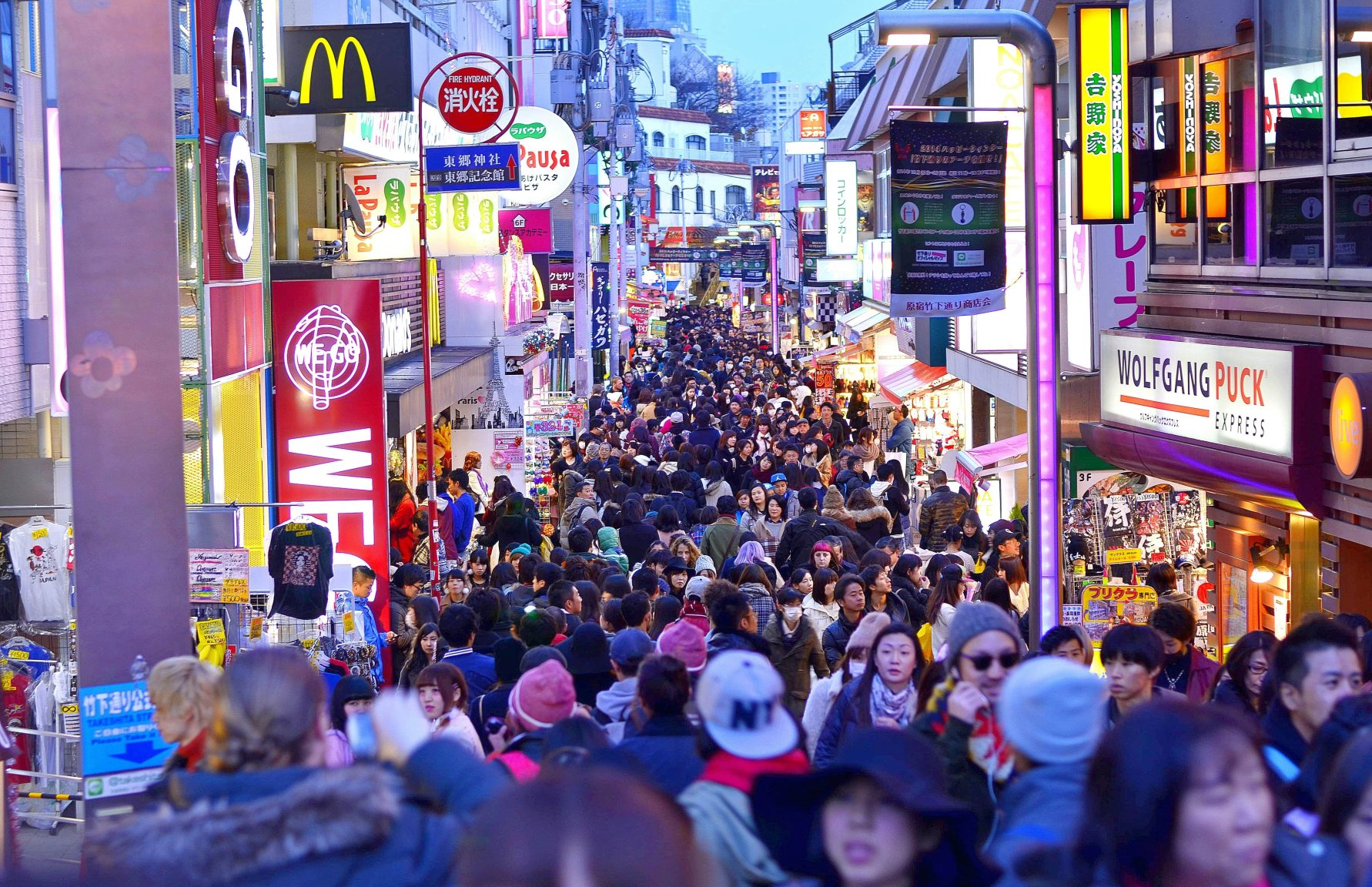
Uncover a blend of quirky fashion and refined style. Today’s journey takes you through colorful street culture in Harajuku and along the upscale avenues of Omotesando, where tradition intermingles with contemporary design.
- Takeshita Street – A playground of colorful fashion, unique boutiques, and bizarre snacks.
- Meiji Shrine – A peaceful forested shrine dedicated to Emperor Meiji.
- Omotesando – The Champs-Élysées of Tokyo, filled with stylish shops and cafes.
Day 5: Nikko – Shogun Shrines and Scenic Landscapes

Escape Tokyo for a day and venture into nature and history. Nikko awaits with ornate shrines and tranquil landscapes that offer a reflective break from the city’s energy, inviting you to explore Japan’s cultural heritage in a serene setting. The train ride from Tokyo Station takes about 2 hours in total. For details, check our guide: How to Get to Nikko from Tokyo.
Morning: Exploring Nikko’s Historic Sites
- Toshogu Shrine – A lavish UNESCO-listed shrine dedicated to Tokugawa Ieyasu, featuring intricate carvings, including the Three Wise Monkeys.
- Rinno-ji Temple – A significant Buddhist temple housing three golden Buddha statues and a tranquil Japanese garden.
- Shinkyo Bridge – A bright red sacred bridge, one of Japan’s most photogenic spots.
Afternoon: Nature and Mountain Views
- Kegon Falls – One of Japan’s tallest waterfalls at 97 meters, accessible via a viewing platform and an elevator that takes you closer.
- Lake Chuzenji – A peaceful lake at the foot of Mt. Nantai, ideal for a scenic stroll or a boat ride.
Return to Tokyo in the evening and prepare for the next day’s journey to Hakone.
Day 6: Hakone – Onsen, Ropeways, and Mt. Fuji Views
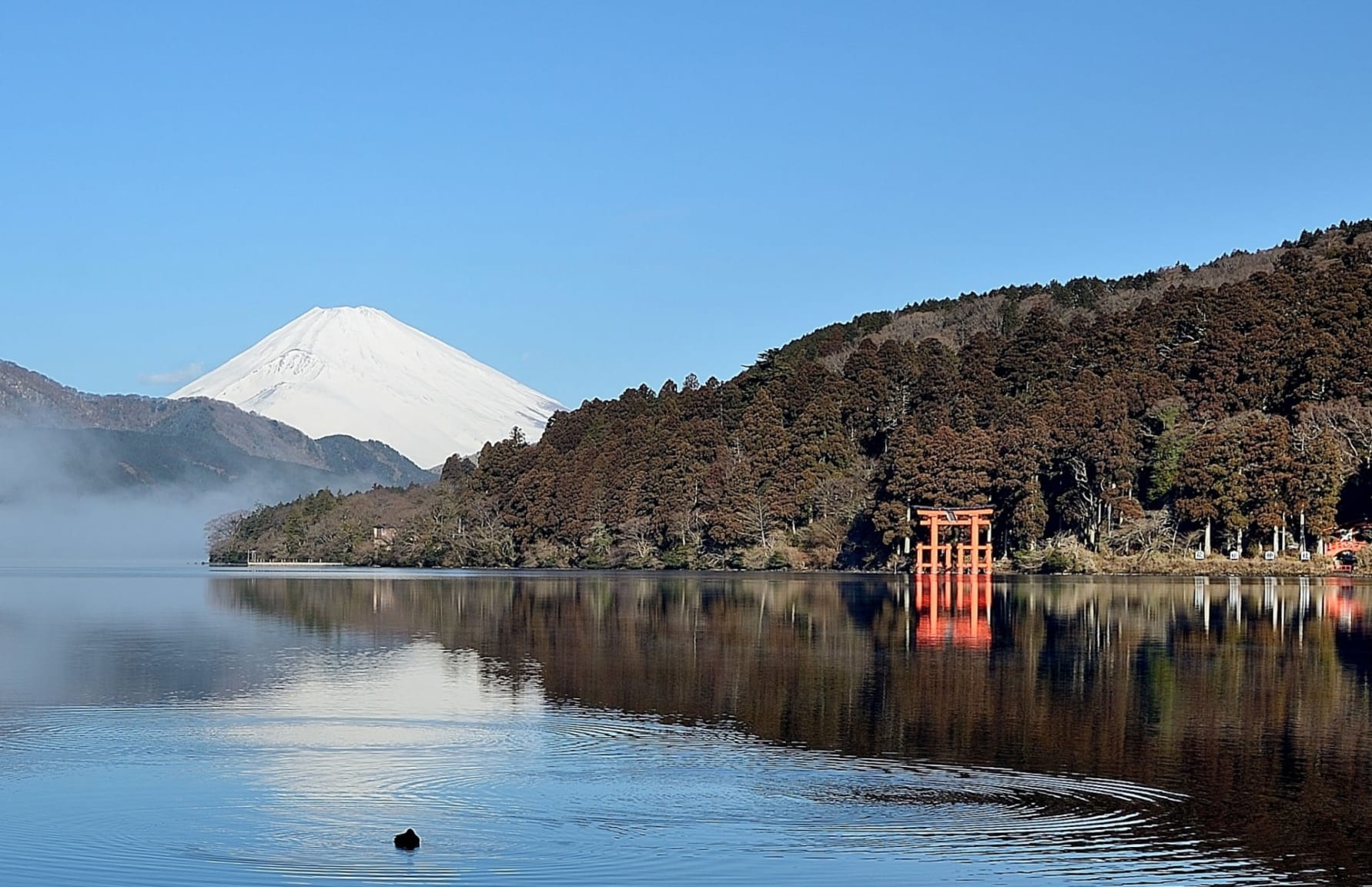
Embrace a day of rejuvenation and scenic views. Hakone promises heaps of beautiful natural sights, soothing hot springs, and the chance to catch breathtaking vistas of Mt. Fuji on a clear day, a great balance of relaxation and discovery at one of the most popular destinations for day trips from Tokyo. The Hakone Free Pass covers transport within the area, making it easy to explore. Find out how to get here here: How to Get to Hakone from Tokyo
Morning: Scenic Rides and Volcanic Valleys
- Hakone Tozan Train – One of Japan’s oldest mountain railways with a unique switchback system, climbing through lush mountains.
- Hakone Open-Air Museum – A mix of modern art and nature, featuring Picasso exhibits and many outdoor artworks.
- Owakudani Volcanic Valley – A steaming, sulfuric landscape where you can try black eggs, said to add seven years to your life. Take the Hakone Ropeway from Gora Station.
Afternoon: Lake Views and Onsen Relaxation
- Lake Ashi Pirate Cruise – A scenic boat ride offering Mt. Fuji views on clear days.
- Hakone Shrine – A beautiful red torii gate standing in the water, one of Hakone’s most famous photo spots.
- Onsen Experience – End the day with a traditional hot spring bath at a local ryokan.
Spend the night at a ryokan in Hakone, to wind down and get ready to board the Shinkansen (bullet train) at Odawara to go to Kyoto the next day.
Week 2: Kyoto, Nara & Osaka
Days 7-9: Kyoto – Temples, Geishas, and Gardens
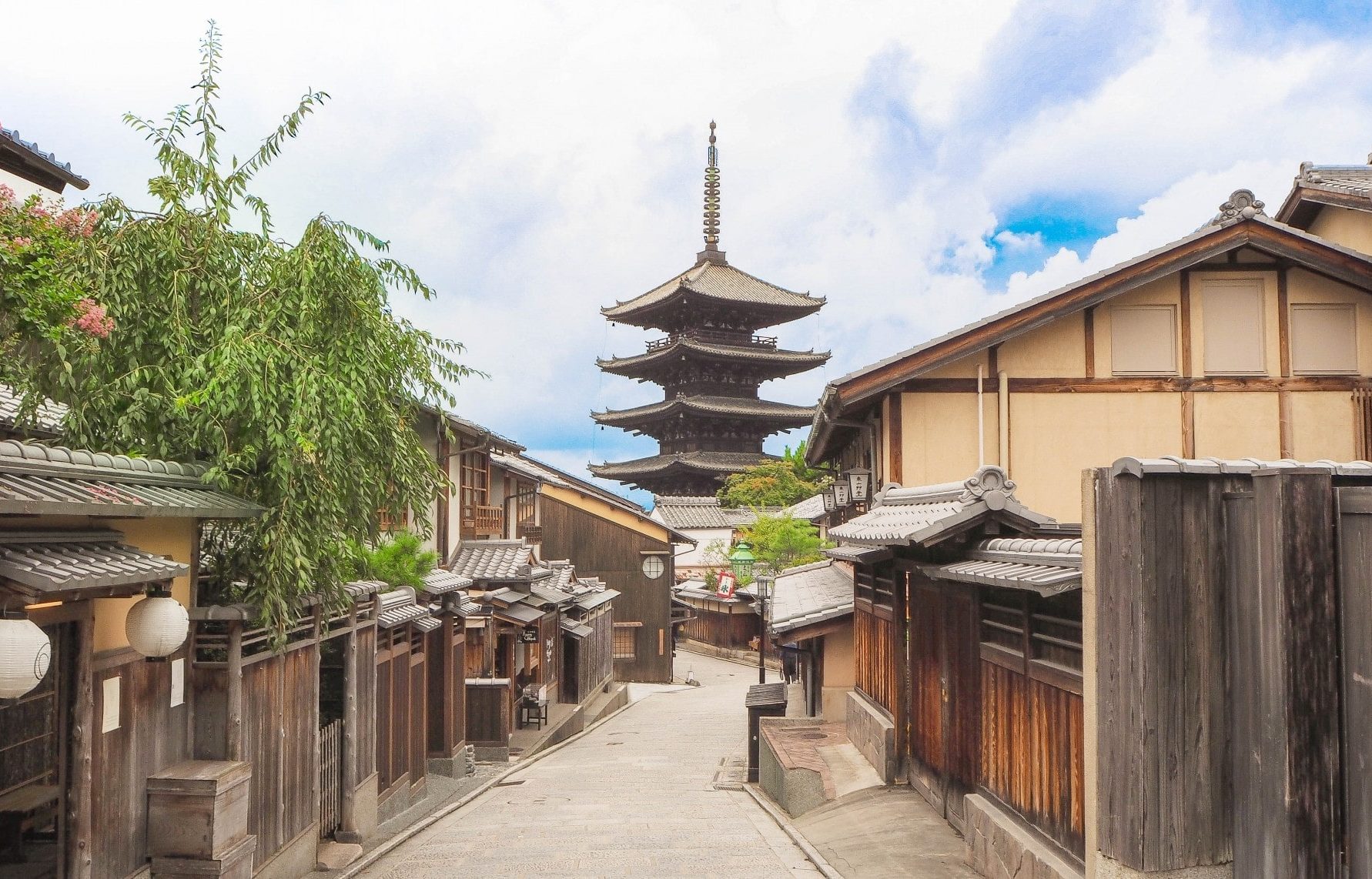
Kyoto is packed with over 1,600 temples, so it’s impossible to see them all. So this plan is focused on experiencing the most famous sights without temple fatigue.
Check more itinerary ideas around Kyoto:
Day 7: Southern Kyoto – The Iconic Torii Gates & Historic Streets

Begin your Kyoto journey by stepping into a world where history and spirituality meet. Today’s experience takes you through sacred shrines and historic districts, setting a reflective tone amid traditional architecture and vibrant cultural pathways.
- Fushimi Inari Shrine – Start early to walk through the thousands of vermilion torii gates leading up Mt. Inari. One of Japan’s most photographed spots.
- Tofuku-ji Temple – Famous for its massive wooden gate and Zen gardens. Particularly stunning in autumn.
- Gion District & Higashiyama – Kyoto’s famous geisha district, filled with traditional wooden teahouses. Visit at dusk for the best chance of spotting a geisha.
- Yasaka Shrine & Maruyama Park – A lively shrine that lights up beautifully at night.
Day 8: Arashiyama – Bamboo Forest & River Views
Escape to Kyoto’s outskirts for a day immersed in nature. Wander through bamboo groves, enjoy serene river views, and explore temples that echo with centuries of history. It’s a peaceful retreat from the city’s bustle.
- Arashiyama Bamboo Grove – Walk through towering green stalks in Kyoto’s most famous bamboo forest. Go early to avoid crowds.
- Iwatayama Monkey Park – A short hike rewards you with panoramic Kyoto views and the chance to feed wild monkeys.
- Tenryu-ji Temple – A UNESCO-listed Zen temple with stunning gardens.
- Togetsukyo Bridge – A scenic river bridge perfect for an afternoon stroll.
- Sagano Scenic Train (Optional) – A beautiful train ride through the mountains, especially recommended in autumn.
Day 9: Northern & Central Kyoto – Golden Temples and Samurai History
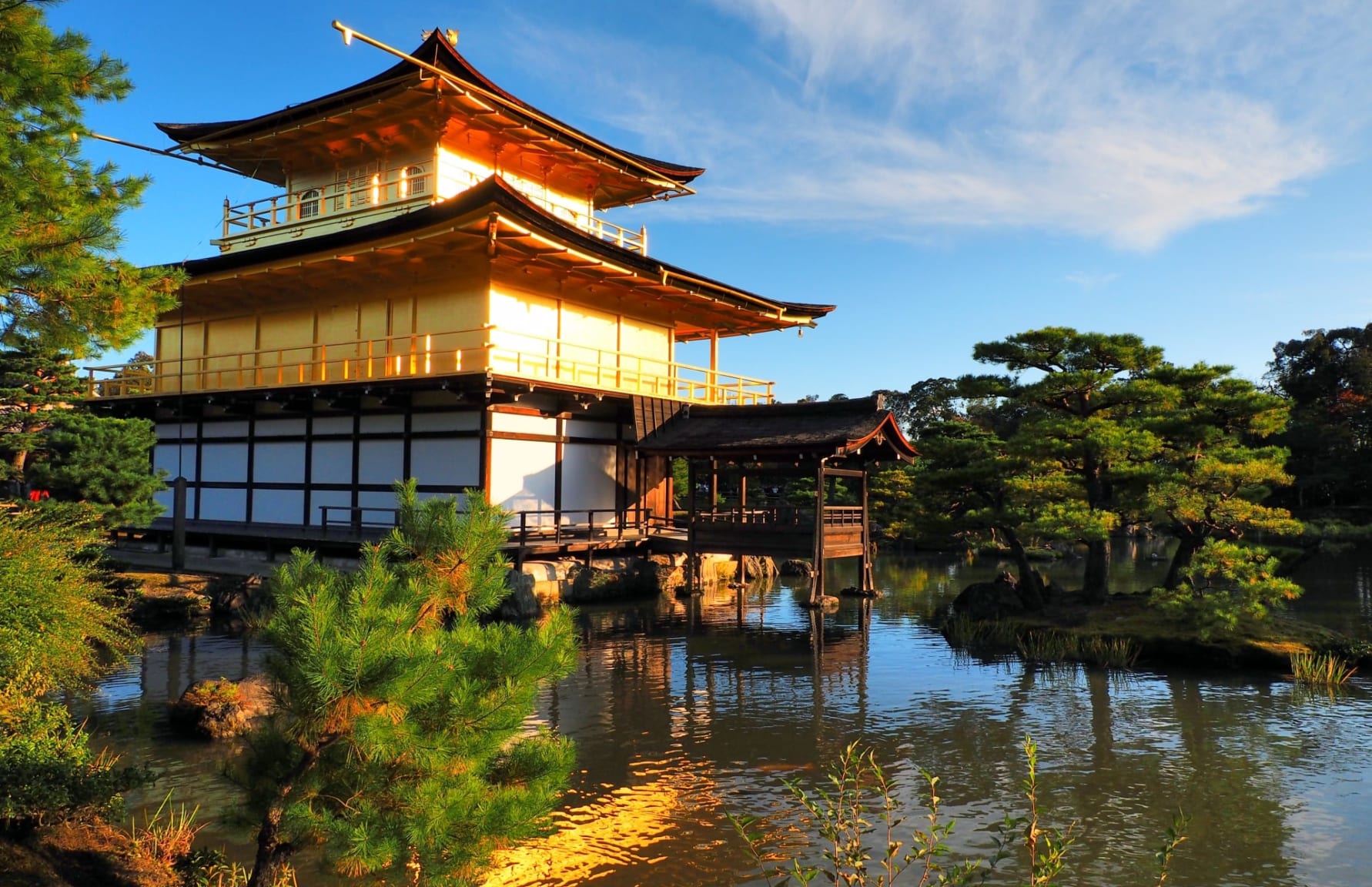
Dig deeper into Kyoto’s heritage today. From shimmering temples to historical palaces, you’ll encounter the refined elegance of traditional Japanese design, balanced with the city’s enduring spirit and artistry.
- Kinkakuji (Golden Pavilion) – Kyoto’s most famous temple, covered in gold leaf and reflected in a peaceful pond.
- Ryoan-ji Temple – Known for its famous Zen rock garden, a peaceful stop for quiet contemplation.
- Nijo Castle – A former samurai-era palace, featuring “nightingale floors” that chirp when walked on (built to detect intruders).
- Nishiki Market – End the day exploring Kyoto’s vibrant food market, sampling matcha treats, fresh seafood, and local delicacies.
Day 10: Nara – Giant Buddhas and Friendly Deer
Step out of Kyoto for a day to explore Japan’s first capital. In Nara, ancient temples, colossal Buddha statues, and friendly deer create a unique blend of history and natural charm that invites quiet reflection. Nara is just a 45-minute train ride away from Kyoto!
For some more ideas around Nara, check out 1 Day Itinerary in Nara: Day Trip to Nara from Kyoto & Best Things to Do in Nara.
Morning: Nara’s Iconic Landmarks
- Todaiji Temple – Home to the Great Buddha (Daibutsu), one of the largest bronze Buddha statues in the world. The temple’s wooden hall is the largest of its kind.
- Nara Park – Famous for its friendly (and sometimes pushy) deer, who bow in exchange for deer crackers (shika senbei).
- Kasuga Taisha Shrine – A stunning shrine with thousands of stone and bronze lanterns, surrounded by a peaceful forest.
Afternoon: More Nara Highlights or Uji (Optional)
- Kofukuji Temple – A five-story pagoda that once belonged to the powerful Fujiwara clan.
- Isuien Garden – A beautifully designed Japanese garden perfect for a quiet break.
- Uji (Optional Stop on the Way Back) – Famous for Japan’s best matcha, Uji is home to Byodoin Temple, featured on the ¥10 coin.
Return to Kyoto in the evening, or head straight to Osaka for a change of pace.
Days 11-13: Osaka – Street Food, Neon Lights, and Castles
Osaka is Japan’s kitchen and a city of contrasts with ancient castles, blazing neon streets, and some of the country’s best entertainment districts.
Day 11: Central Osaka – Castles and City Views
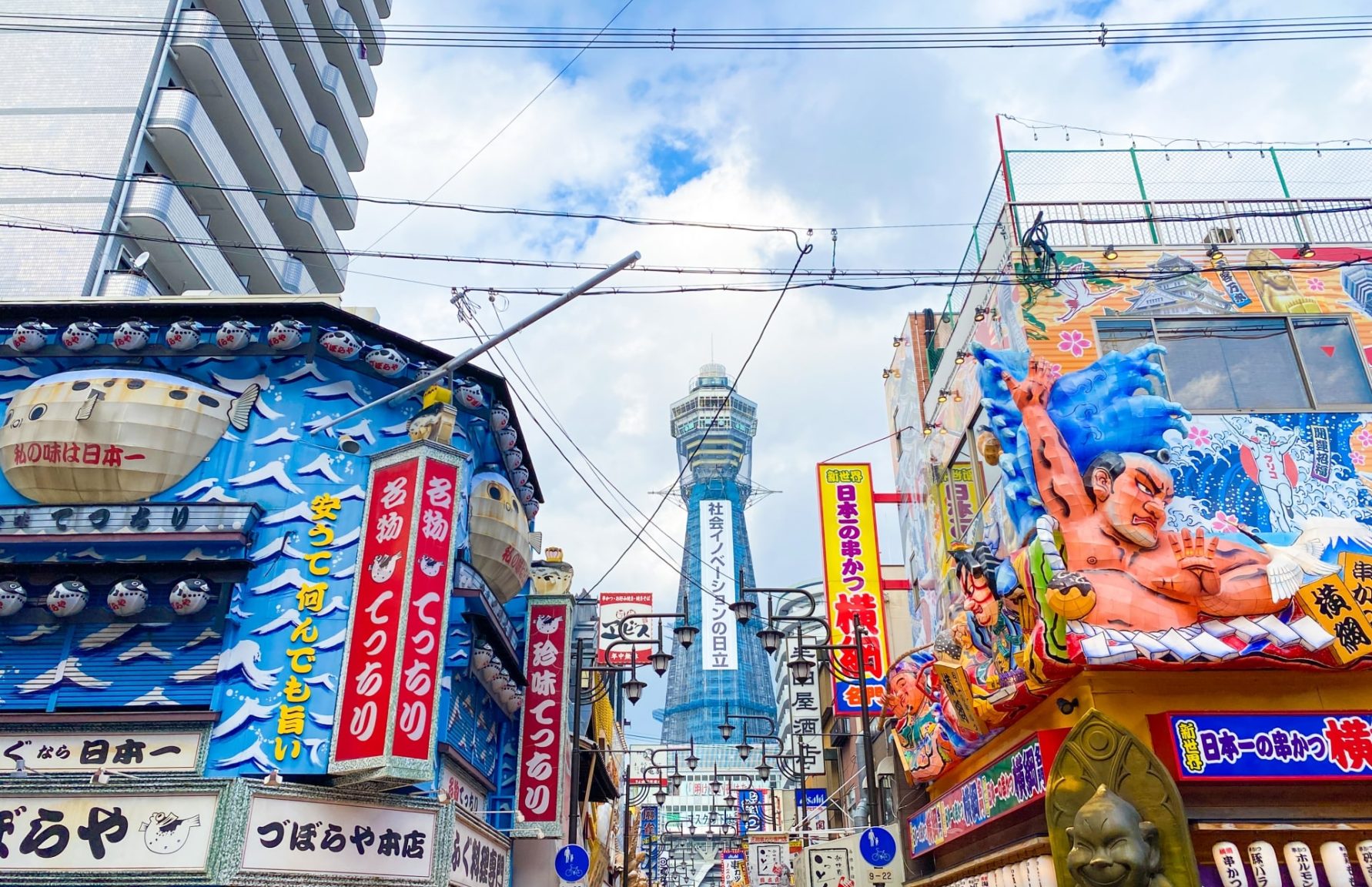
Transition to the energetic vibe of Osaka. Your day unfolds around historic landmarks and modern views, where the legacy of samurai eras meets the contemporary rhythm of a bustling metropolis.
- Osaka Castle – A must-visit samurai-era castle, surrounded by a massive park and cherry blossoms in spring.
- Osaka Museum of History – Great for understanding Osaka’s transformation from an ancient trade hub to a modern metropolis.
- Umeda Sky Building – Head up to the Floating Garden Observatory for a 360° panoramic view of the city.
- Shinsekai & Tsutenkaku Tower – A retro area with Showa-era vibes and famous kushikatsu (deep-fried skewers).
Day 12: Dotonbori & Namba – The Heart of Osaka’s Nightlife
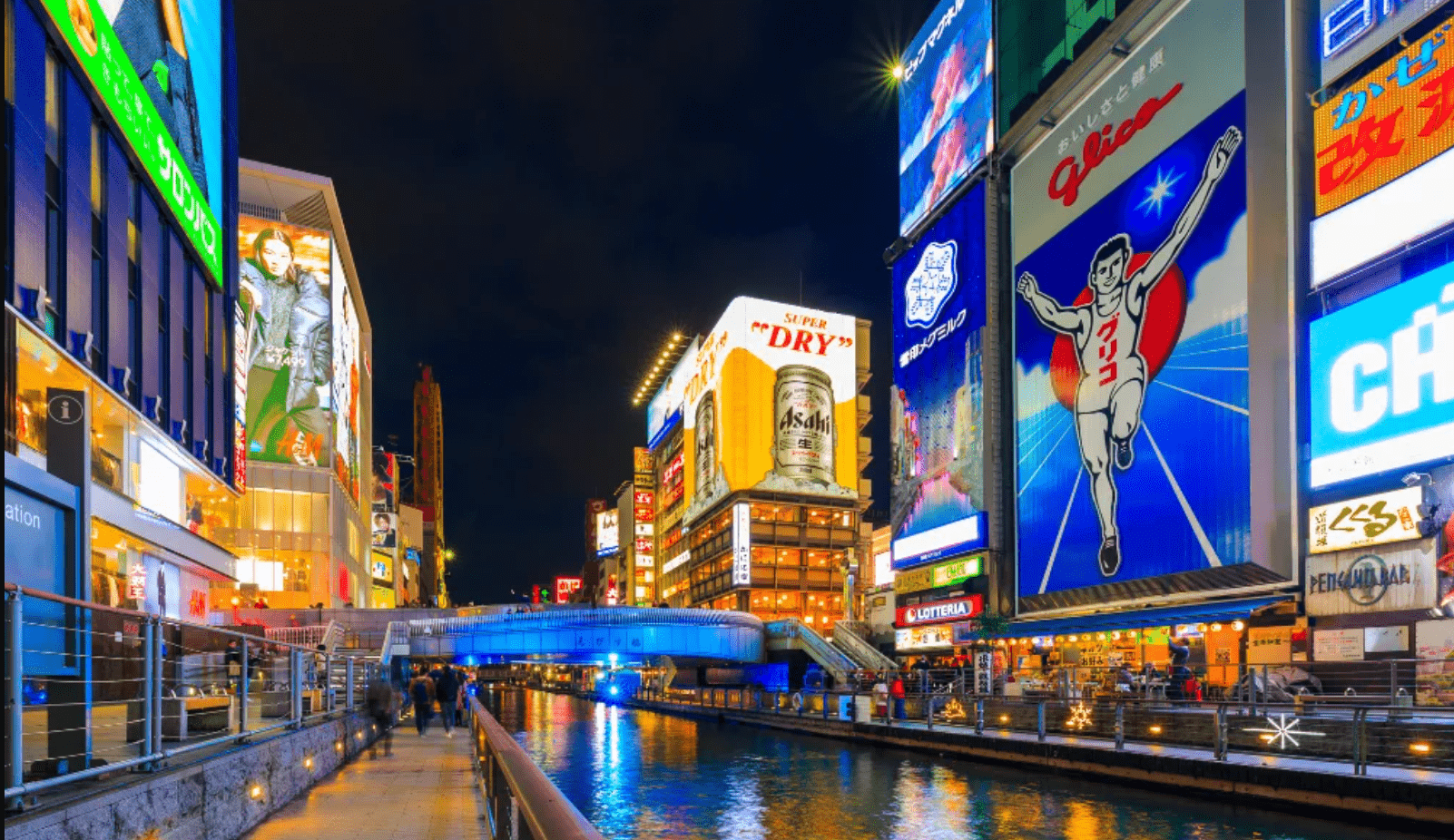
Experience Osaka’s vibrant soul through its culinary and shopping streets. Today, neon lights and lively markets lead you through the heart of the city, where local flavors and dynamic street culture take center stage.
- Kuromon Ichiba Market – Start the day by sampling fresh seafood, wagyu beef, and Osaka street snacks.
- Shinsaibashi Shopping Street – A mix of high-end fashion, quirky boutiques, and Japanese cosmetics.
- Amerikamura (Amemura) – Osaka’s version of Harajuku, full of trendy streetwear and vintage shops.
- Dotonbori – The neon-lit entertainment district, home to the famous Glico Running Man sign and some of Osaka’s best street food:
- Takoyaki (octopus balls) – Osaka’s most famous snack.
- Okonomiyaki (savory pancake) – Best eaten at a local teppanyaki grill.
- Negiyaki & Kushikatsu – More deep-fried Osaka specialties.
Day 13: Universal Studios Japan or Bay Area
For the final day in Osaka, choose between an action-packed day at Universal Studios Japan (USJ) or a more relaxed exploration of the Osaka Bay Area to wind down before continuing with your trip. Both options capture a different side of Osaka!
Option 1: Universal Studios Japan (USJ)
- The Wizarding World of Harry Potter – Walk through Hogwarts and Hogsmeade.
- Super Nintendo World – Race through Mario Kart: Koopa’s Challenge and explore a real-life Mushroom Kingdom.
- Hollywood Dream & The Flying Dinosaur – Two of the park’s most exciting roller coasters.
Option 2: Osaka Bay Area
- Osaka Aquarium Kaiyukan – One of the world’s largest, to explore diverse marine life.
- Tempozan Giant Ferris Wheel – Take a ride and enjoy stunning panoramic views of the bay.
- Tempozan Marketplace – Explore the area and have fun with the different dining and shopping experiences .
Next, it’s time to slow down in Hiroshima and Miyajima.
Week 3: Hiroshima, Miyajima & Southern Japan
Days 14-15: Hiroshima & Miyajima – History and Island Views
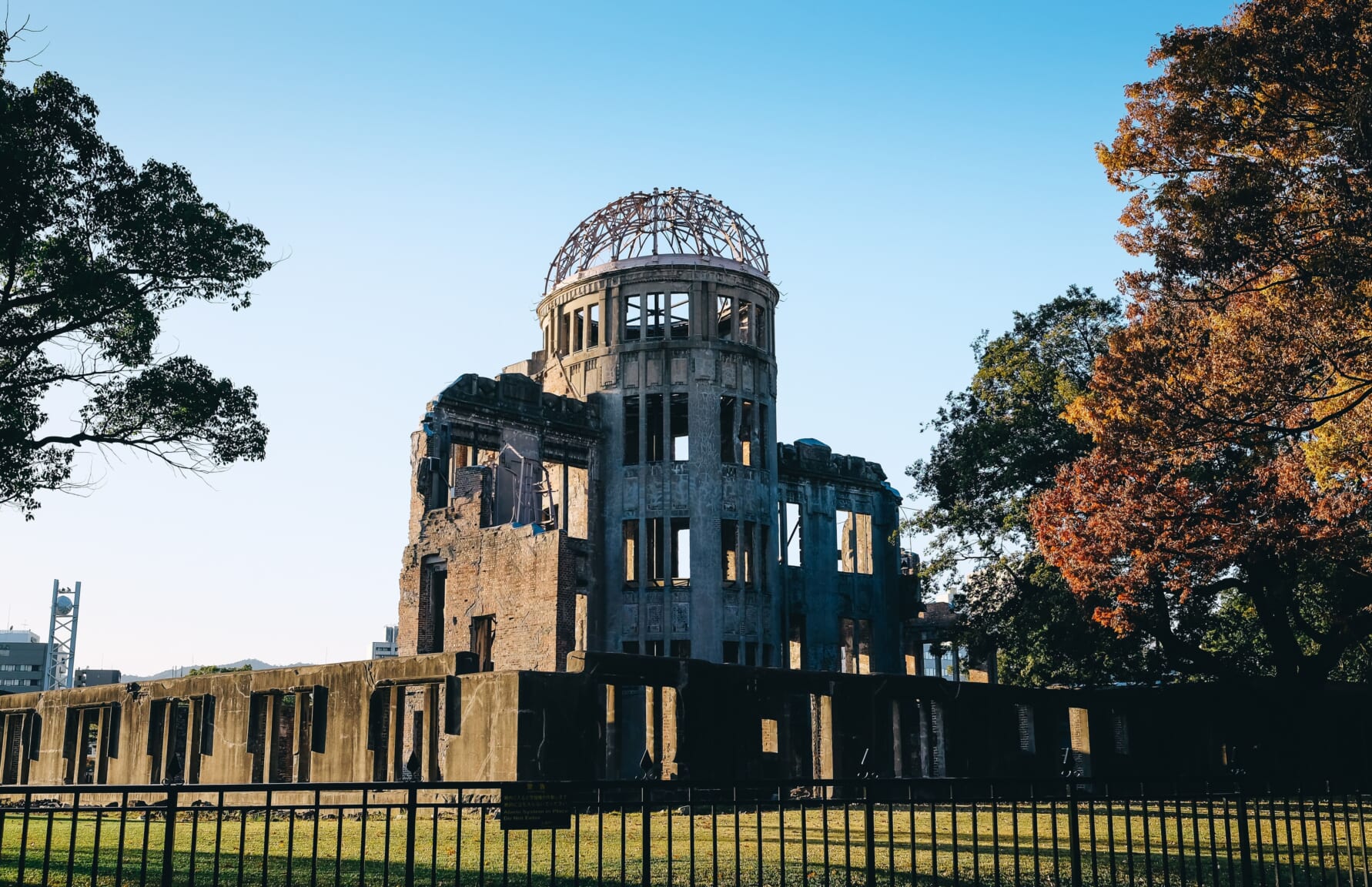
Hiroshima is a city with a deep history, but also one that has rebuilt itself into a vibrant and welcoming place. Miyajima, just a short ferry ride away, offers stunning coastal views, sacred deer, and one of Japan’s most iconic shrines.
More ideas around Hiroshima:
Hiroshima Itinerary for 3 Days
Day 14: Hiroshima – A City of Resilience and Remembrance
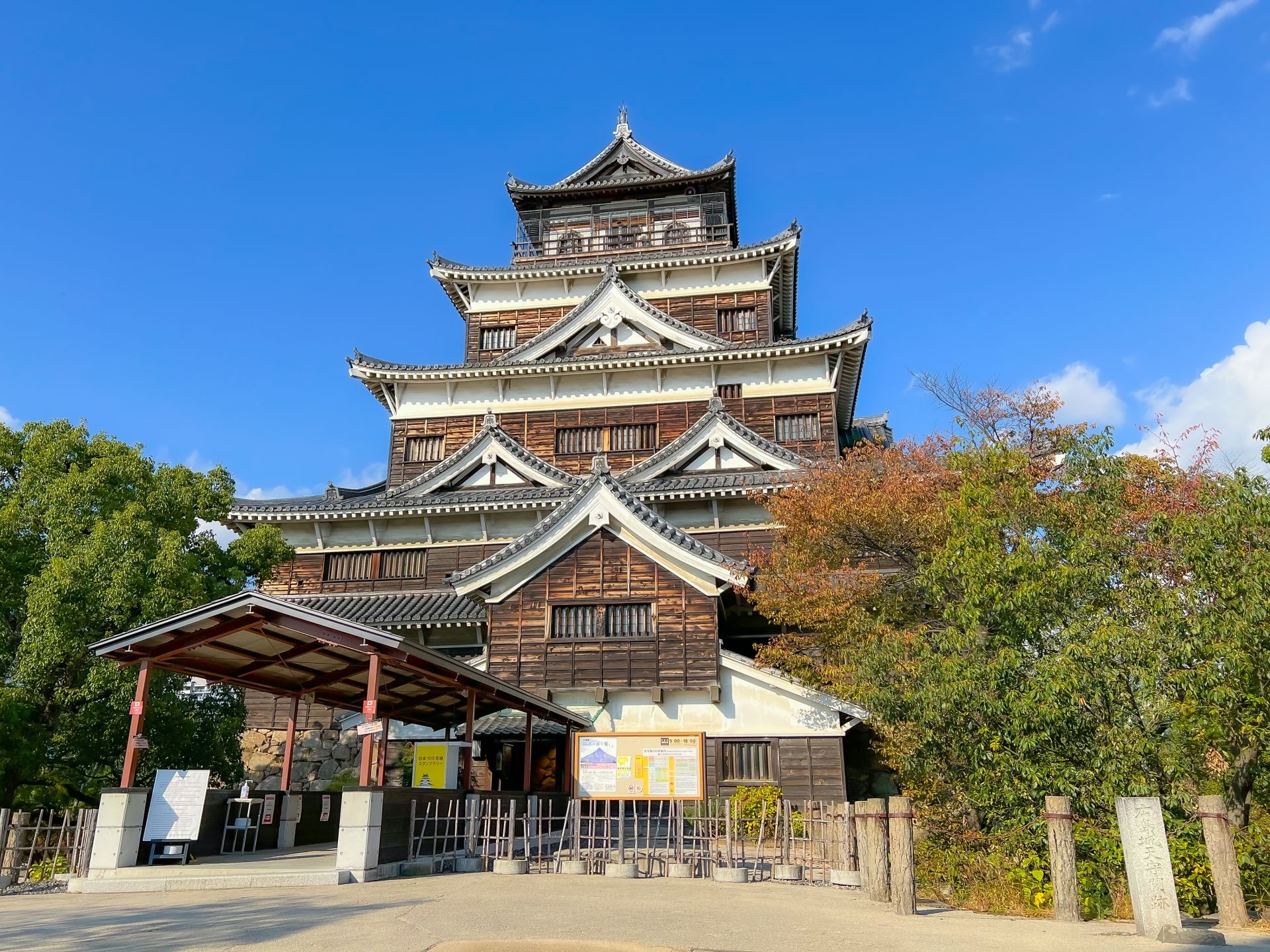
The Shinkansen from Osaka to Hiroshima takes about 1.5 hours. Begin your exploration in Hiroshima, and take a thoughtful look at a city rebuilt from tragedy, providing context to its everlasting message of peace.
Morning: Peace Memorial Park & Museum
- Hiroshima Peace Memorial Park – A powerful reminder of history, dedicated to peace and remembrance.
- Atomic Bomb Dome – The skeletal remains of a building that survived the 1945 atomic bombing, preserved as a UNESCO site.
- Hiroshima Peace Memorial Museum – A sobering but important museum that tells the story of Hiroshima before, during, and after the bombing.
Afternoon: Exploring Modern Hiroshima
- Shukkeien Garden – A beautiful traditional Japanese garden, perfect for a peaceful break.
- Hiroshima Castle – A reconstructed samurai-era castle with great city views from the top.
- Okonomimura – A multi-floor food complex dedicated entirely to Hiroshima-style okonomiyaki (savory layered pancakes).
Day 15: Miyajima – The Floating Shrine & Island Views
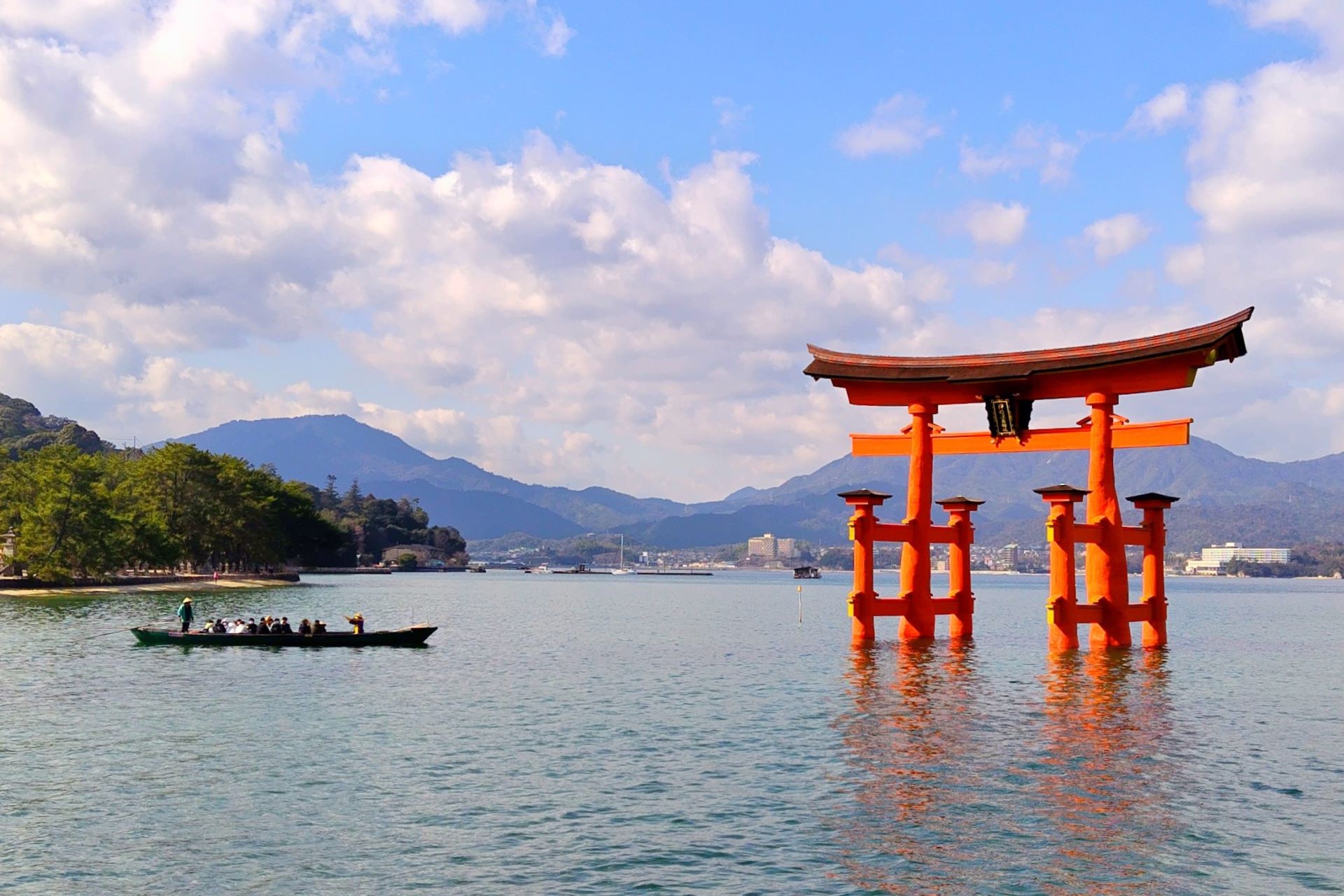
Step onto Miyajima Island for a day of spiritual beauty and natural wonder. Enjoy the quiet charm of sacred shrines and sweeping sea views, along with the local flavors that complete the island’s timeless appeal.
A 45-minute train and ferry ride from Hiroshima takes you to Miyajima Island, famous for its floating torii gate and friendly deer.
Morning: Iconic Landmarks and Scenic Walks
- Itsukushima Shrine – One of Japan’s most famous shrines, with its huge torii gate standing in the water (best seen at high tide).
- Mount Misen (via Ropeway or Hike) – Stunning panoramic views of the Seto Inland Sea from the summit. The hike takes about 1.5–2 hours, or you can take a ropeway up and walk the final section.
Afternoon: Local Culture and Relaxation
- Daishoin Temple – A hidden gem with beautiful Buddhist statues and a peaceful atmosphere.
- Miyajima’s Shopping Streets – Try grilled oysters, momiji manju (maple-shaped sweet cakes), and Hiroshima-style lemon drinks.
- Relax by the Waterfront – Enjoy the island’s quiet charm when the sun sets.
At this point, you have the option of spending the night in Miyajima or heading back to Hiroshima in the evening. The Ferry back to Miyajimaguchi station usually runs until past 10 PM but always make sure to verify schedules on site just in case.
Days 16-17: Himeji & Kobe – Castles, Cuisine, and Urban Charm
Day 16: Himeji – Japan’s Most Beautiful Castle
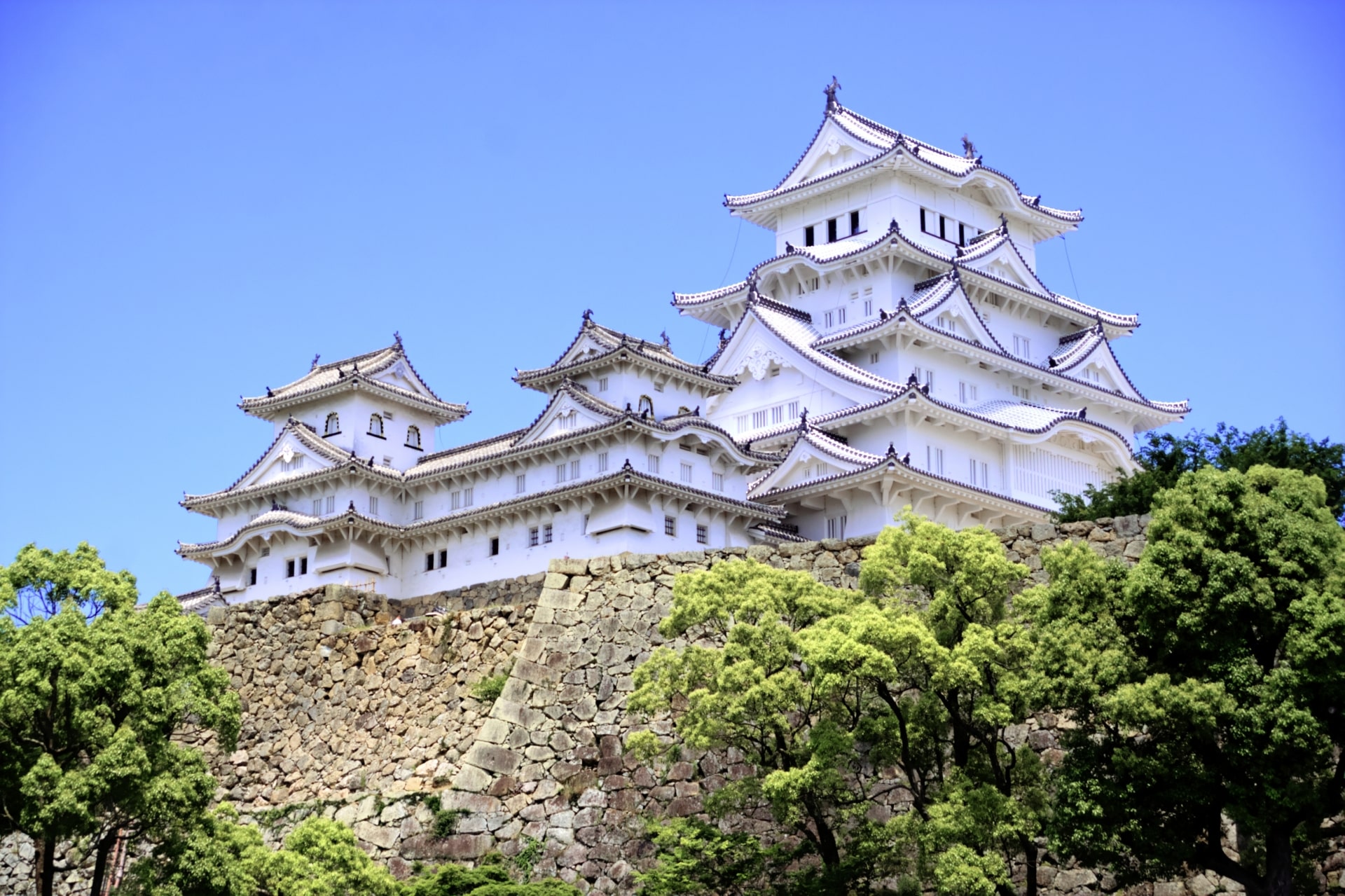
The Shinkansen from Hiroshima to Himeji takes about 1 hour. In Himeji you’ll have the opportunity to discover the grandeur of Japan’s best-preserved castle. Surrounded by traditional gardens, this day is dedicated to exploring the architectural marvels of feudal Japan.
- Morning:
- Himeji Castle: Tour this UNESCO-listed castle, one of the best preserved in Japan.
- Afternoon:
- Koko-en Garden: Enjoy a tea break amid meticulously maintained traditional gardens adjacent to the castle.
Day 17: Kobe – Modern Flair and Culinary Excellence
Experience Kobe’s modern sophistication paired with its celebrated cuisine. Enjoy the lively waterfront and the chance to savor world-renowned beef, reflecting the city’s unique balance of tradition and innovation.
- Morning:
- Kobe Harborland: Stroll the waterfront area for shopping and views of the harbor. Don’t miss the chance to go to the observation deck at the Kobe Port Tower!
- Afternoon:
- Kobe Beef Experience: Dine at a reputable restaurant to savor the legendary local beef.
- Meriken Park: Explore modern art and maritime history before an evening return.
Days 18-19: Kanazawa – Leading the Way in the Arts
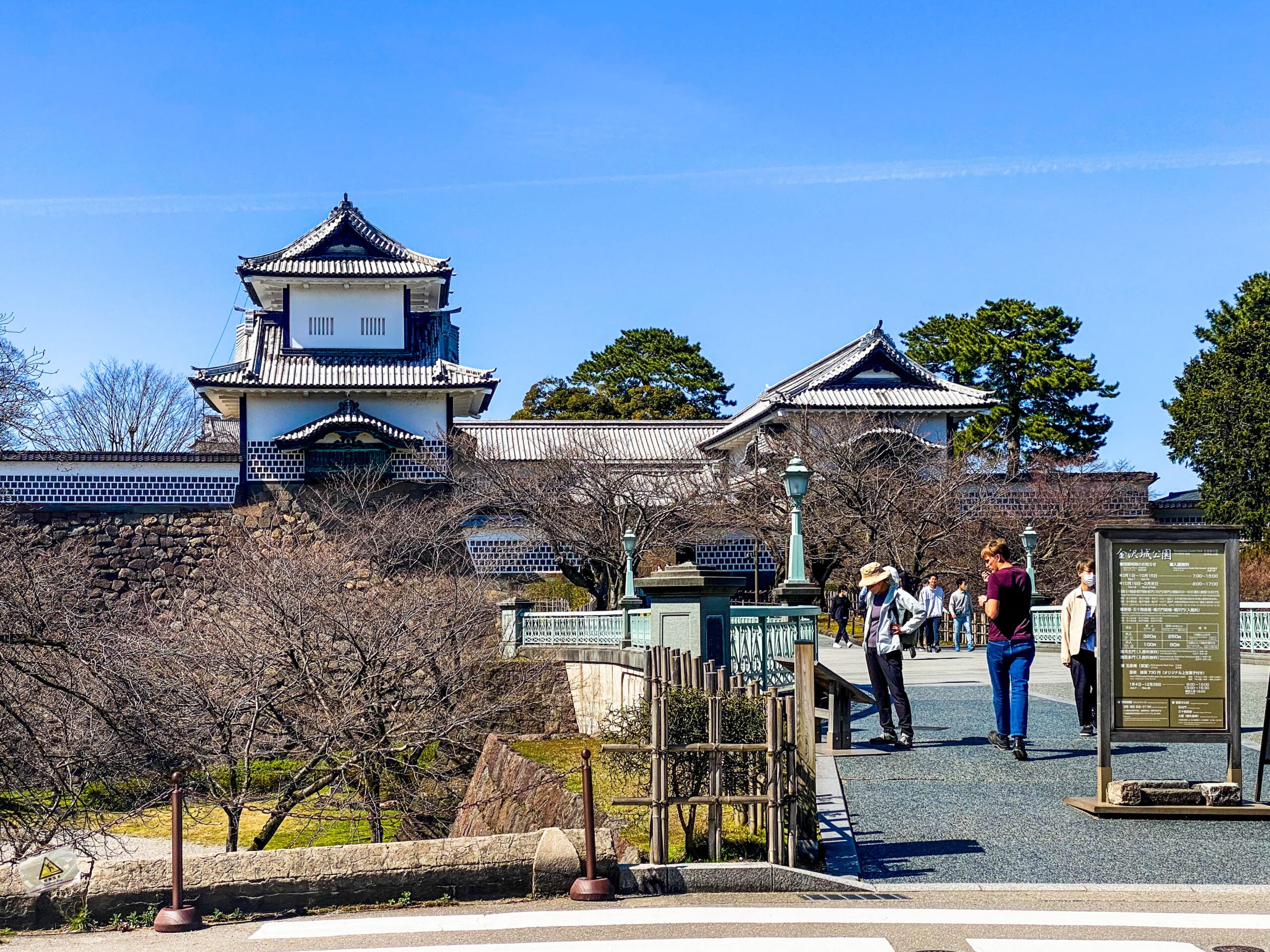
Take the Shinkansen in Shin-Kobe Station. You’ll have to change to the JR Thunderbird in Kyoto, and then switch to the Hokuriku Shinkansen in Tsurugi. The total time is about 2 hours and 30 minutes. Plan to leave early to arrive in Kanazawa mid-morning.
More ideas in Kanazawa:
Kanazawa Itinerary: 2 Days from Tokyo to Kanazawa
Day 18: Kanazawa – A Gateway to Art and Tradition
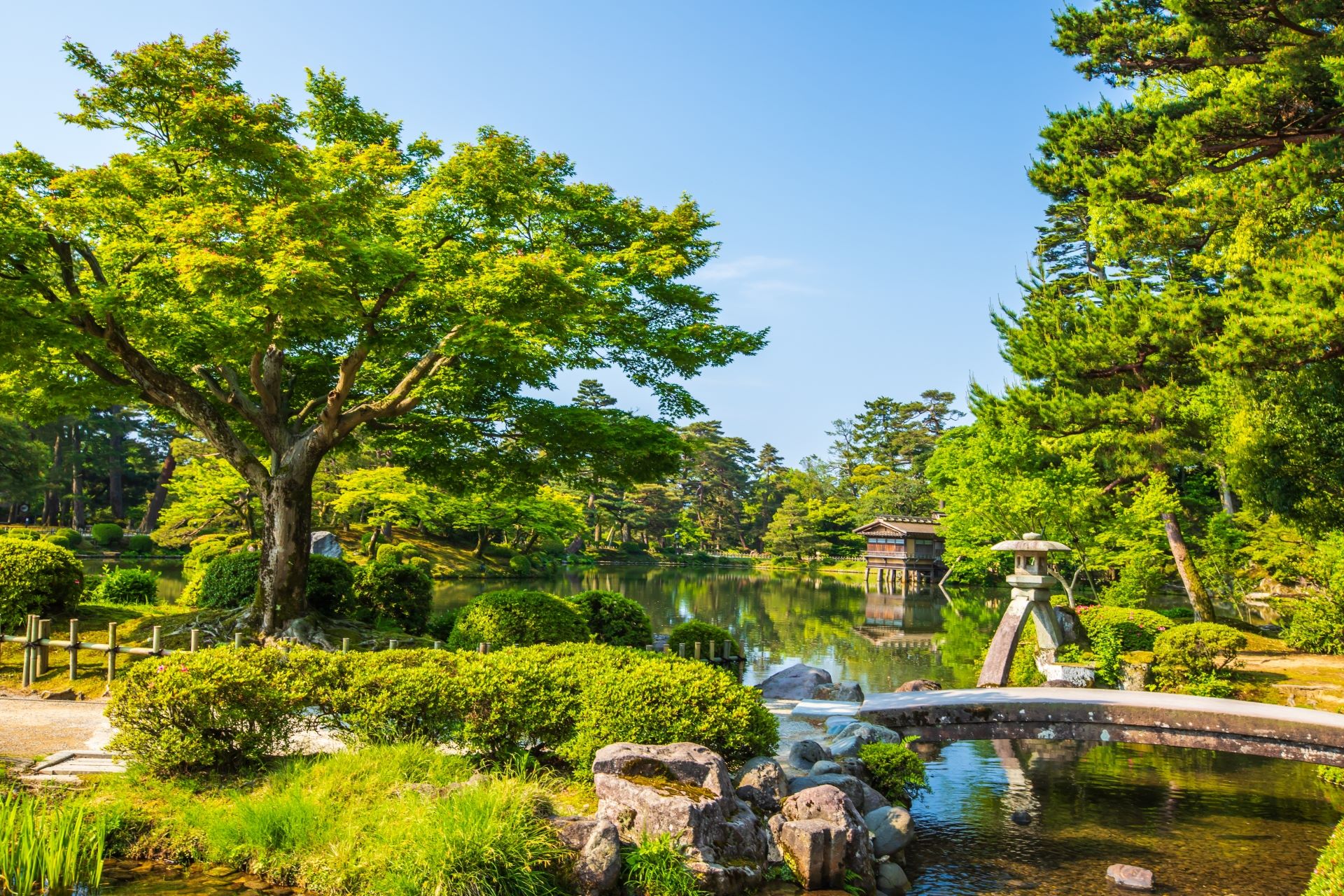
Kanazawa is a city celebrated for its rich history and vibrant contemporary art scene. Here, you’ll explore classic landmarks that represent the refined elegance of traditional Japan.
- Kenrokuen Garden: Stroll through one of Japan’s most celebrated gardens, where each season paints a different masterpiece.
- Kanazawa Castle: Just a short walk away, admire the majestic architecture and learn about the city’s feudal past.
- 21st Century Museum of Contemporary Art: Contrast history with modernity as you explore innovative exhibits in a striking setting.
Day 19: Kanazawa – Historic Districts and Culinary Explorations
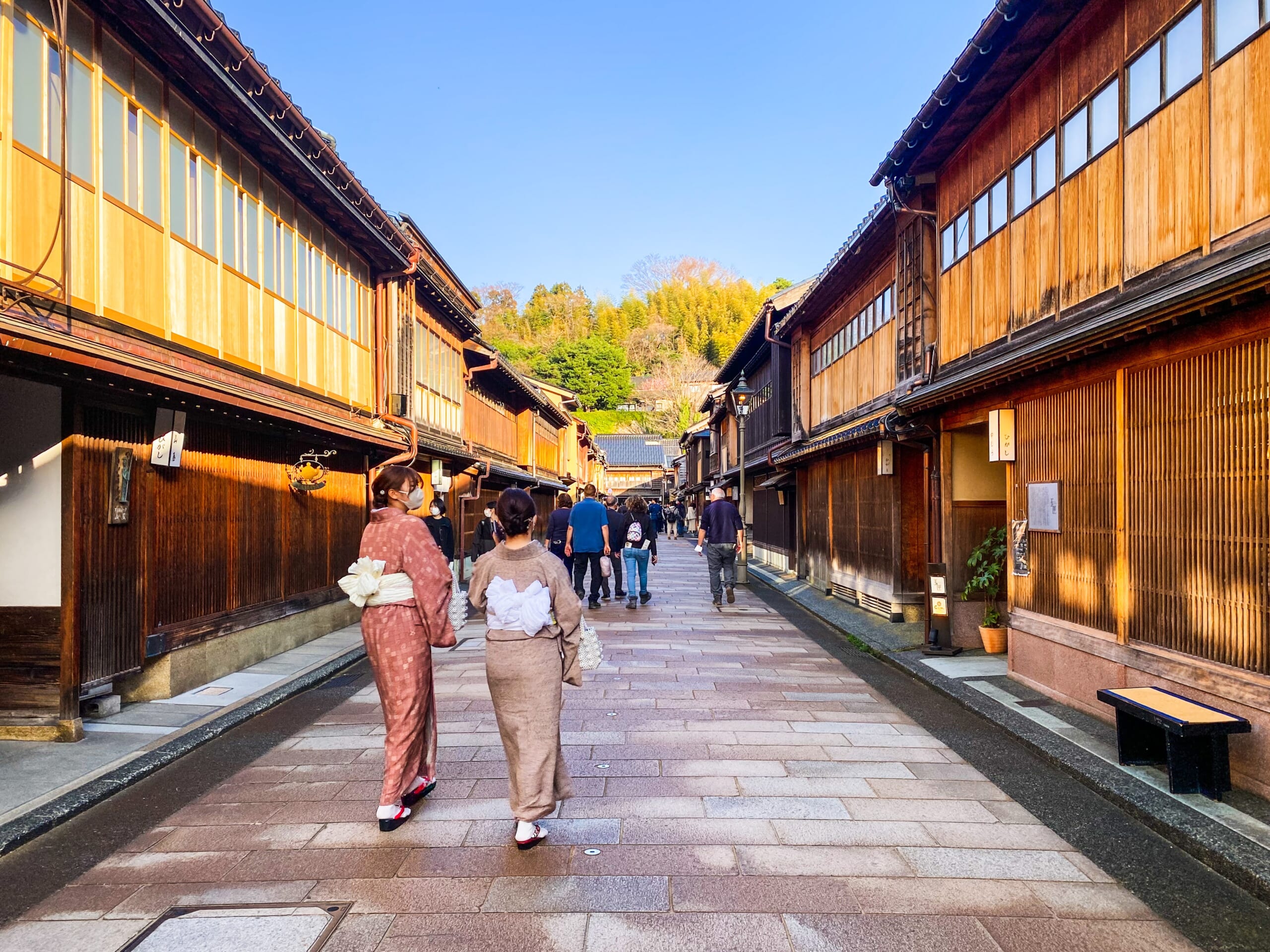
Continue your Kanazawa journey by delving into its charming streets and culinary delights. Today offers an intimate look at the city’s traditional neighborhoods and bustling local markets.
- Higashi Chaya District: Wander through narrow lanes lined with historic teahouses and artisan shops.
- Nagamachi Samurai District: Discover preserved samurai residences and get a feel for life in historic Japan.
- Omicho Market: Savor fresh seafood and local specialties, a true taste of Kanazawa’s vibrant food culture.
Days 20-21: Return to Tokyo or Explore More
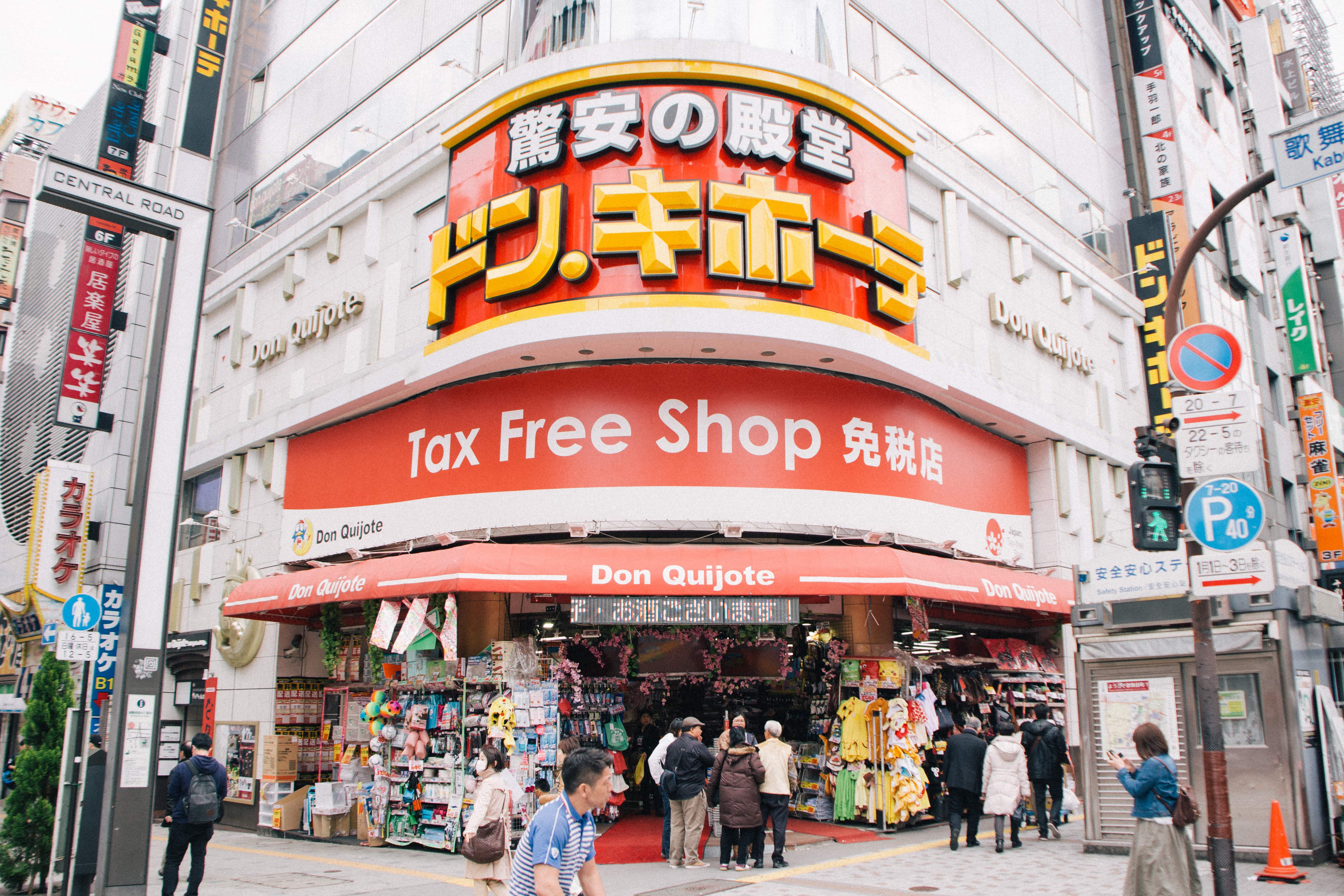
Day 20: Back to Tokyo
- Travel Back: Return to Tokyo via the Hokuriku Shinkansen.
- Flex Time: Use the day for any last-minute sightseeing or shopping. For souvenir ideas, check our guides: 20 Best Souvenirs from Japan & What to Buy in Japan.
Day 21: Last Day
- Departure Day: Enjoy a final breakfast and pick up any souvenirs before your flight home. Check out some breakfast ideas here: 5 Best Tokyo Breakfast in the Early Morning.
Three weeks in Japan is enough to experience the country’s contrasts without feeling rushed. This itinerary covers the essential destinations while allowing time to slow down and appreciate each place. By the end of this journey, you’ll have walked through ancient temples, navigated high-tech cityscapes, and tasted some of the best food in the world. Japan is a country that stays with you long after you leave, and this itinerary is just the beginning of everything it has to offer!
For more travel and itinerary ideas, check these articles too!
Written by
Photographer, journalist, and avid urban cyclist, making sense of Japan since 2017. I was born in Caracas and lived for 14 years in Barcelona before moving to Tokyo. Currently working towards my goal of visiting every prefecture in Japan, I hope to share with readers the everlasting joy of discovery and the neverending urge to keep exploring.





